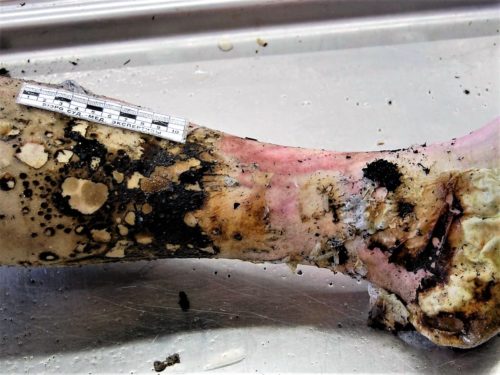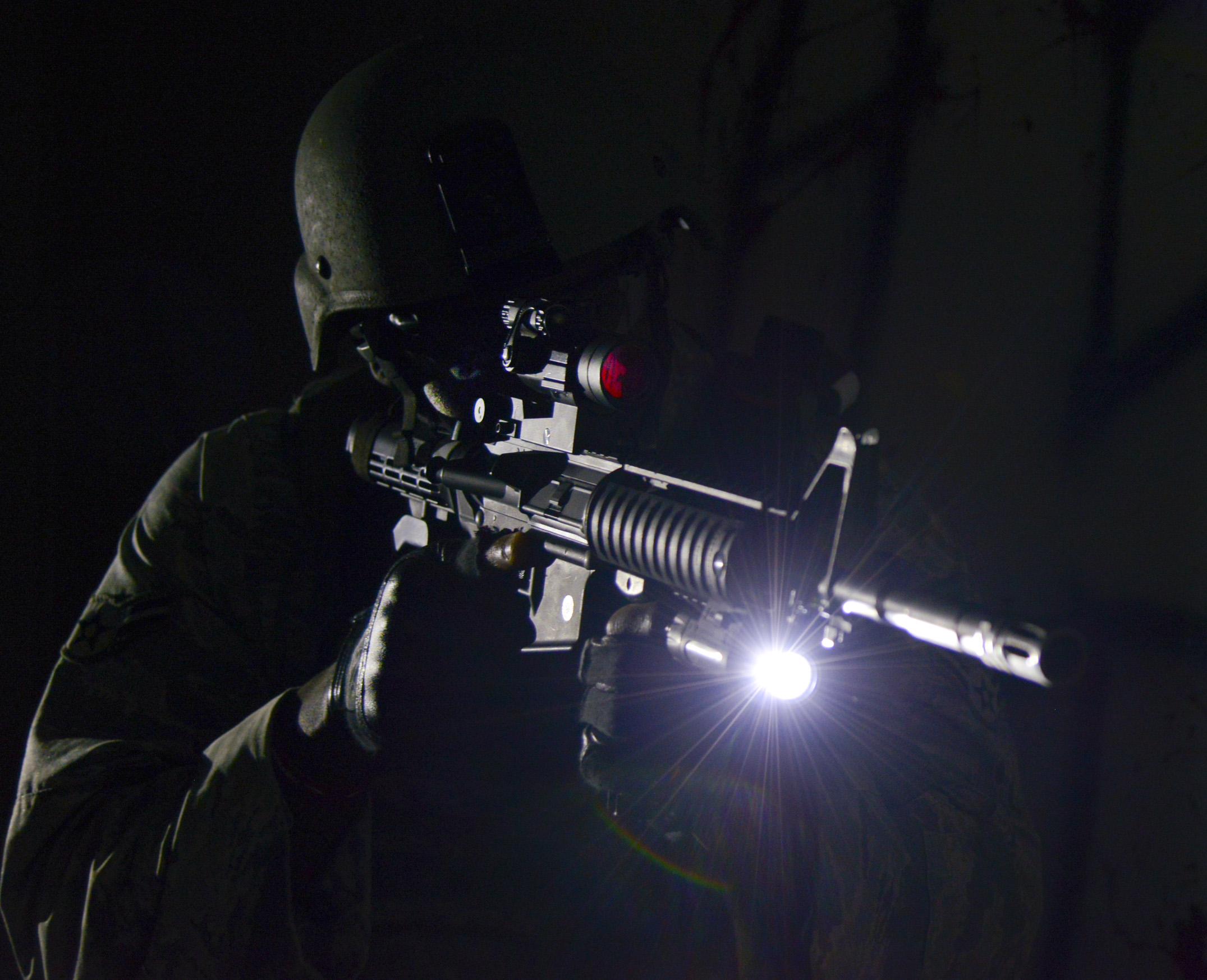Law enforcement tactical teams are regularly exposed to a variety of potential fire/flash hazards, whether it be from the deployment of FSDDs or other pyrotechnic munitions, raiding meth labs, explosive or thermal breaching or the increasing risk from IEDs. The most serious burns are often not caused by the original hazard but are secondary to clothing igniting.
In the event of a flash fire, flame resistant (FR) clothing reduces the severity of burn injuries, provides additional escape time and significantly increases the chance of survival. It can literally mean the difference between life and death. Oftentimes a survivable injury becomes a life threatening because after the initial incident is over, the clothing continues to burn, melt or smolder. FR clothing should be thought of as a form of insurance, much as other protective gear, such as body armor and ballistic helmets. A very strong case can be made for the issuance of FR uniforms to all first responders.

Non-FR treated fabrics such as standard cotton and polyester are commonly used as base layers by tactical officers. These fabrics can be very dangerous in the event of a fire. Untreated cotton is the most flammable of all natural and synthetic fibers and can result in severe burns. While polyester resists ignition, once ignited it will melt into a hot dripping, sticky magma-like substance that will adhere to your body, making treatment of the burn injury nearly impossible.
When flammable natural and synthetic fibers are combined, the hazard may actually increase due to a high rate of burning and melting. Polyester cotton is an example of where this is the case, making it poor choice in this regards. This isn’t the case with nylon cotton.
Nylon cotton (NYCO) has a higher ignition resistance than untreated 100% cotton or poly cotton. Although a better choice than untreated cotton or poly cotton, NYCO fabrics have no inherent flame resistant properties and, despite some misleading claims to the contrary, nylon does melt. The melting temperature of nylon is fairly close to that of polyester. CORDURA® NYCO fabric does exhibit no melt/ no drip performance when tested under vertical flame or Thermal Protective Performance (TPP), as cited in NFPA. 2112. TPP exposure reaches point where 2nd degree burn occurs.
FR fabrics help to keep you safe should you find yourself near an unexpected fire or explosion. There are many garments on the market that claim to flame resistant. They offer varying degrees of protection that are offered. The level of protection that is required will depend on the application. There is generally a trade off between the level of protection and comfort.
There are two basic ways to make a garment flame resistant. The first way is to treat a non-FR fabric with fire retardant chemicals to make it fire resistant. The second way is to use a fabric with inherent flame resistance, i.e., the fabric is flame resistant without having to be treated since the fibers are inherently flame resistant.
Using a FR-treated fabric offers some protection. However, the protection may wash out or wear out over time, leaving you with a garment that is less protective. Continual replacement of the garment will be necessary to maintain its protective capabilities.
FR clothing with flame resistance inherent to the garment is a far better option. Although it may cost more initially, it will actually be less costly over time. Plus, the protective qualities are permanent. They won’t wash out or wear out.

While flame resistance is important in tactical clothing, so to is moisture management technology. You want flame protection without unnecessarily increasing heat stress. Heat stress reduces you performance and safety. You want safe and comfortable garments that will help to keep you cool and dry. You want a moisture wicking fabric.
Moisture wicking fabric is designed to pull moisture away from the skin. The fabric moves moisture from wet areas to dry areas using a process called capillary action. The fabric draws sweat and perspiration off of the skin and out to the exterior of the fabric, where it evaporates, keeping you dry.
It is easier for the moisture to evaporate on the surface of the fabric than when it is trapped between the garment and the skin. Advanced moisture wicking fabrics are a combination of hydrophilic (water absorbing) and hydrophobic (water repelling) fibers to provide optimal moisture absorption and drying capabilities.
The lack of fire resistance aside, regular cotton garments touching your skin will absorb your perspiration like as sponge. Cotton will not wick away water and is slow to dry. Cotton/polyester blends are a little better when it comes to comfort, but not by much. They don’t insulate when wet and can lead to hypothermia in cooler weather. Wet garments can also bunch, chafe and irritate, especially under heavy armor.
Traditionally, many teams have gone to Nomex® flight suits when a FR uniform was deemed desirable. Nomex is an inherently FR meta-aramid material developed in by DuPont® in the early 1960s. Although this is still a popular option, today there are a number of FR apparel options available.
DRIFIRE® offers a full line of inherent FR clothing. DRIFIRE utilizes a lightweight, tough fabric with a patented, high performance blend of fibers that’s FR and hydrophobic/moisture wicking. DRIFIRE garments can also be layered to achieve greater levels of FR protection without compromising comfort. Many of the products can be ordered in custom colors.
TRU-SPEC® offers its XIFIRE® line of FR apparel. XFIRE is made from durable FR 100% cotton woven fabric with FR Category 2 HRC rating and is certified to meet or exceed NFPA 1975FR, 70E, and 2112 standards.

Need for FR Uniforms Never Greater
The current level of threat against law enforcement nationwide has never been greater. It’s essential for agencies to take a proactive approach in providing increased levels of protection against all types of attack. FR clothing is an integral part.
International and domestic terrorisms is persistent threat faced by all Americans. The IED has changed the US military. It’s an unfortunate reality that domestic first responders must now contend with as well.
*The views and opinions expressed on this website are solely those of the original authors and contributors. These views and opinions do not necessarily represent those of Spotter Up Magazine, the administrative staff, and/or any/all contributors to this site.

